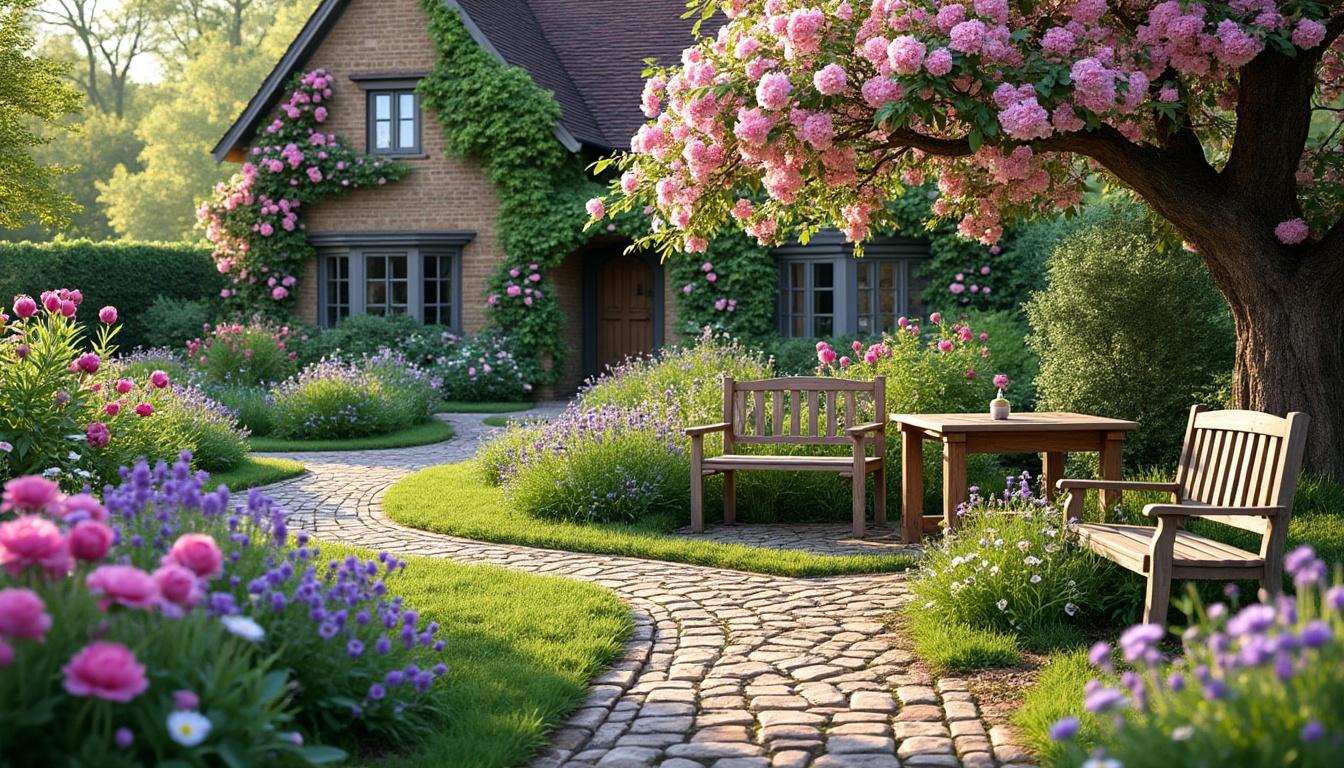Crafting an English country garden remains a timeless pursuit, blending heritage and horticulture into outdoor sanctuaries that resonate with tradition, beauty, and biodiversity. From the intimate charm of cottage gardens bursting with floral vibrancy to the stately formality of grand estate landscapes, each garden reflects its setting as well as the personality of its occupants. This article explores innovative design ideas inspired by House & Garden, offering insights into adapting classic English garden styles with contemporary techniques and sustainable practices. For gardeners and entrepreneurs alike, it is an invitation to create spaces that are not only picturesque but profoundly nourishing for both nature and soul.
English Country Garden Designs Tailored to Home and Landscape
The essence of a successful English country garden lies in its harmonious relationship with the architecture it accompanies and the surrounding land. Whether it’s a small village cottage or an expansive country estate, gardens should embody order and shelter, complemented by a vibrant interplay of colour and form. This approach ensures the garden becomes a natural extension of the home’s character.
- Meadow and orchard integration for naturalistic landscapes.
- Walled gardens to provide enclosure and microclimate control.
- Flower-dense patches suitable for smaller residential plots.
- Extension of views with tree-lined avenues and specimen plantings.
Garden design experts emphasize that respecting the local environment while delivering distinctive expression allows for gardens that flourish sustainably and captivate the eye.
Essential Tools and Plant Selections for English Gardens
Using premium gardening tools and plants ensures that the vision of the garden is realized with professionalism and longevity. Recommended brands include Gardena for reliable gardening equipment and Burpee for high-quality seeds, while David Austin Roses offers exemplary varieties of roses integral to the English country garden aesthetic.
| Item | Recommended Use | Brand |
|---|---|---|
| Pruning Shears | Maintaining rose bushes and ornamental plants | Gardena |
| Heirloom Flower Seeds | For diverse, naturalistic planting schemes | Burpee |
| English Roses | Classic and fragrant rose selections | David Austin Roses |
| Plant Supports and Frames | Structural support for climbing plants | Haxnicks |
| Eco-Friendly Paint | Garden furniture and fences | Farrow & Ball |
Incorporating these essentials while drawing inspiration from traditional layouts monitored in climate-specific planting guides can elevate any garden project.
Reviving the Cottage Garden – Vibrancy Meets Biodiversity
The quintessential English cottage garden is enjoying a resurgence, blending classic floral displays with modern ecological awareness. These gardens are characterized by their multitude of colourful flowers such as marigolds, hollyhocks, and a profusion of roses, mainly sourced from esteemed growers like David Austin Roses.
- Emphasis on biodiversity to support bees, birds, and wildlife.
- Integration of vegetables, herbs, and fruits alongside ornamentals.
- Relaxed, naturalistic planting allowing plants to self-seed and spread.
Designer Jo Thompson highlights that this style is flexible and suitable for any garden size. Elements like loose rose mounds intertwined with perennials give an effortless charm that rewards patient gardeners. Additionally, the ecological benefits, including pollinator support and the meditative pleasure of observing plant life cycles, make this garden style particularly compelling.
Materials and Structures Enhancing Cottage Gardens
Structures contribute both form and function in a cottage garden. Durable, eco-conscious materials from brands like Wilko and Thomas Lloyd are favored for garden furniture, trellises, and borders, combining strength with aesthetic appeal.
- Natural stone paths for historic authenticity.
- Rustic wooden trellises for climbing plants.
- Decorative yet functional plant supports and wire frames.
These elements also assist in organizing the space without sacrificing the garden’s informal and welcoming atmosphere.
Formal Country Garden Design – Timeless Elegance and Symmetry
For grand period houses, a garden that reflects architectural grandeur through clipped topiary, parterres, and formal layouts is paramount. These gardens communicate tradition and refinement while offering a structured visual journey through the property.
- Elaborate box hedging and yew topiary for definitive shapes.
- Wide herbaceous borders with rhythmic plantings offering seasonal interest.
- Incorporation of kitchen gardens for both beauty and utility.
- Strategically placed statues and specimen trees to create focal points.
Opening views with beech or lime tree avenues integrates the garden with the broader landscape, enriching the visitor experience.
Styling and Maintenance Essentials
The upkeep of a formal garden demands precision tools and reliable maintenance supplies. Trusted brands such as Gardena and Clarke & Clarke contribute high-grade equipment and decorative textiles, ensuring that the garden’s grandeur is preserved year-round.
| Maintenance Item | Purpose | Brand |
|---|---|---|
| Topiary Shears | Shaping hedges and box plants | Gardena |
| Decorative Garden Cushions | Enhancing outdoor seating comfort | Clarke & Clarke |
| Traditional Wood Stain | Preserving fences and benches | Farrow & Ball |
Implementing Sustainable and Contemporary Practices in the English Country Garden
In 2025, sustainability is a key consideration in garden design. Embracing composting, efficient water use, and native planting helps create an ecosystem that thrives with minimal intervention. Brands like Haxnicks and Seedlings specialize in eco-friendly products that support this approach. Integrating these methods ensures the garden not only remains beautiful but contributes positively to the environment.
- Water-saving irrigation systems from Gardena.
- Organic composting and soil enhancers.
- Use of native British plants and pollinator-friendly species.
- Recycling and repurposing materials for garden furnishings.
FAQ About Creating an English Country Garden
- What plants are essential for an English country garden? Traditional choices include roses, hollyhocks, marigolds, and a variety of perennials that provide seasonal interest and support biodiversity.
- How important is maintaining biodiversity in a garden? Biodiversity ensures healthy pollination, attracts wildlife, and enhances the ecological balance, making gardens more resilient and enjoyable.
- What tools are recommended for garden upkeep? Brands like Gardena offer reliable pruning shears and watering systems, while Haxnicks provides sturdy plant supports essential for climbing species.
- Can modern gardens still reflect traditional English styles? Absolutely; contemporary materials and sustainable methods can be seamlessly integrated without compromising the classic aesthetics.
- Where can gardeners find expert planting advice suitable for local climates? Resources such as specialized climate planting tips provide tailored guidance for success.

